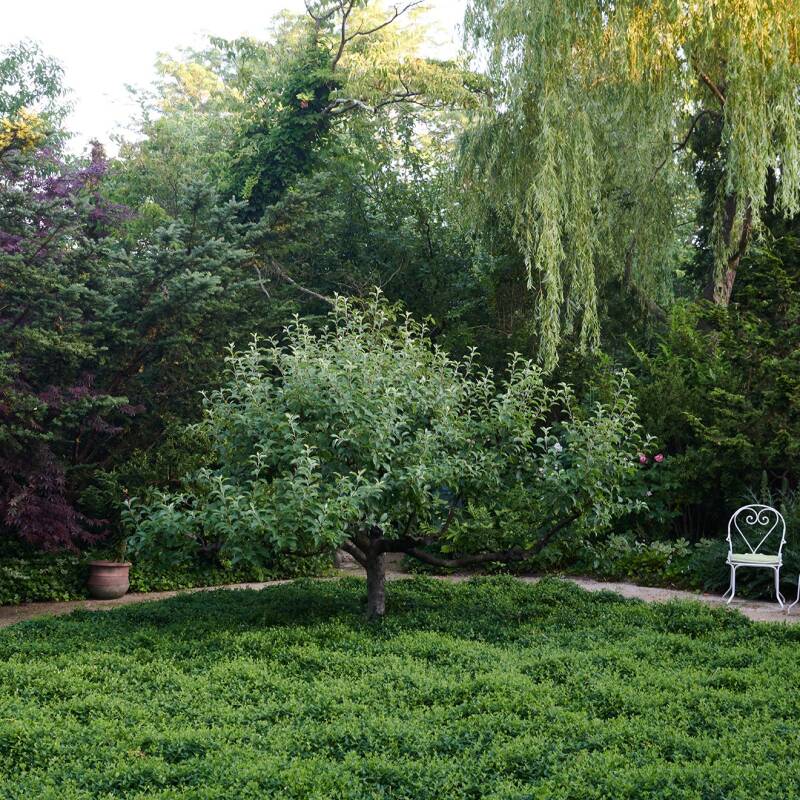The best laid plans for the garden are usually made in the dead of winter, when short days give us long, cozy evenings to dream up a new project or pore over seed catalogues in anticipation of next summer’s borders. In a similar way, it’s a good time to make some resolutions and to implement changes to not only what you’ll plant but how you’ll maintain it all, too. Here then are some of my garden resolutions for 2024.
1. Keep a garden notebook.

How many times do you make a mental note and then very swiftly forget all about it? In the garden it’s all too easy to forget six months later, say, the exact position where you wanted to plant a swathe of spring bulbs, or the spot you were hoping to relocate a plant, or the name of the shrub you wanted to buy. A notebook is arguably the most underestimated tool for the gardener; making notes, lists, and sketches through the gardening year, both in your own garden and when visiting others, will keep plant names and plans all in one place.
2. Ditch the impulsive plant shopping.

In my garden there is always a table through the growing season of plants that have not yet found their spot—a collection of impulse purchases, bought during over-excited, under-planned visits to the plant nursery, that are then neglected there was never a set plan for them. As the season comes and goes, those plants stay on the table, an embarrassing reminder of my failure to properly plan. So this year I’m vowing to eradicate this habit and buy only the plants I already have a spot for.
3. Make more space for messiness.

As my garden margins have become messier—with nettles, brambles, wildflowers and weeds—the insect and bird life has boomed. It doesn’t take much to create habitats for wildlife: Undisturbed corners, dead hedges, log piles, fallen wood, leaf mounds will all provide useful hiding places and habitats for the creatures that are fundamental to the health and life of your garden. By leaving a variety of weeds to grow, you will also boost biodiversity too.
4. Boost the soil.

I can get a bit lazy in my approach to the annual mulch, but this past summer, while comparing my borders to pictures taken a few years ago, it became clear that it needed a significant boost come winter. I expect a lot from my garden, which features borders planted successionally so that there is something always in flower from late winter right through until November, and a rich mulch with organic matter will give it much needed nutrients for the growing season ahead. As I have very sandy, free draining soil in my garden, I prefer a rich mulch, either manure or Dalefoot’s Double Strength compost; both, of course, are peat-free.
5. Invest in naturalizing bulbs.

Of all the purchases we make as gardeners, there’s nothing quite like the sweet-shop frenzy of the spring bulb catalogues—the colors, the variety, the delicious smorgasbord of flowers that usher in spring. But tulips, perhaps the most popular of the spring bulbs, are one-hit wonders for most of us, even when planted in the garden. After years of one-season relationships with them, I’ve vowed to be more sustainable in my bulb choices, favoring naturalizing bulbs like narcissi and crocus (which are great for early pollinators) that will not only flower year after year but will also naturalize too, multiplying over time.
6. Maintain tools.

As a serial abuser and loser of tools, I’m resolving to take the time to maintain them better this year. Niwaki’s Jake Hobson is the guru of beautifully made Japanese tools that you’ll want to keep sharp and clean, and his clear, instructive videos give the lowdown on the best way to repair and sharpen blades. It won’t stop me from losing my hori hori in the borders, but gardening will be much more enjoyable with secateurs that have been properly cared for.
7. Take time to sit and stare.

Looking after a garden is hard work and it can become a tough task-master in the peak of summer when, despite all the beauty, there is always something to be weeded or watered, dead-headed or pruned. But make a restful corner to sit and take it all in. The weeds can wait but those moments are fleeting.
See also:
- Expert Advice: How to Get Rust off Tools
- Gardening 101: When to Use Compost, Fertilizer, and Mulch
- Green Therapy: What Is It and Why You Need It for Your Health












Have a Question or Comment About This Post?
Join the conversation (0)